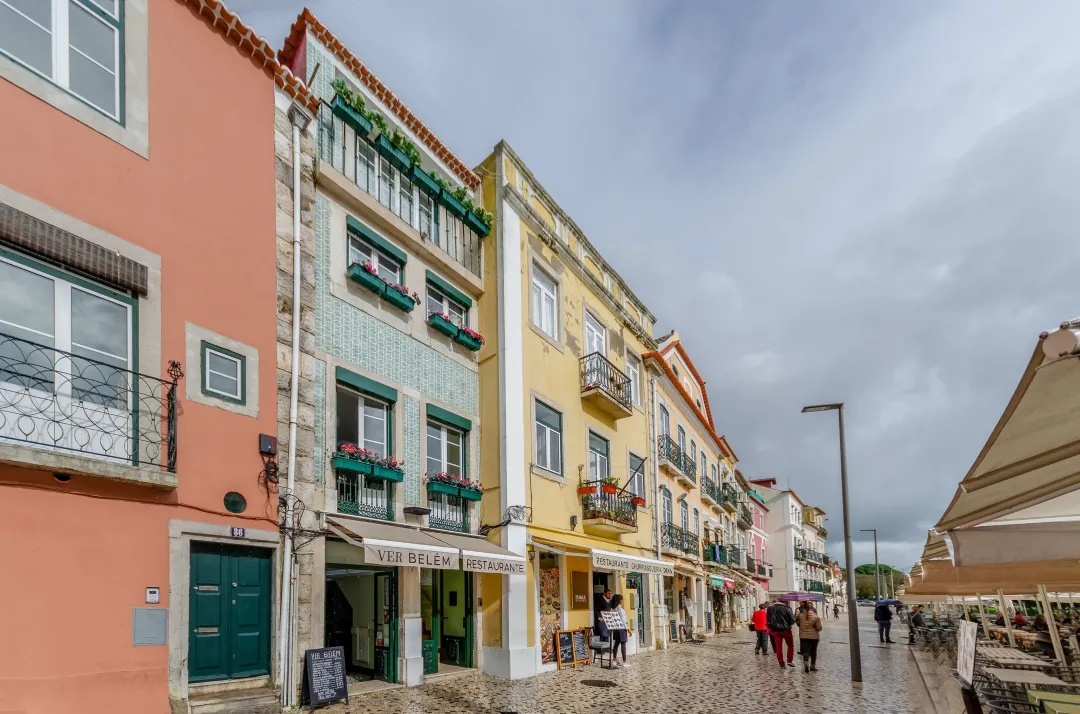Belém has so much to offer. Aside from being a key historical and monumental area, it is also known for its myriad of museums, contemporary art exhibitions, spacious parks, tree-lined plazas, scenic riverside walks, and chic restaurants and cafés. It is where downtown folks usually escape for a little bit of peace and quiet to commune with nature and engage in more laid-back leisure activities. For some reason, it reminded me of Ottawa, my current home city.
We circled its aristocratic sector filled with elegant townhomes. Some are covered with colourful azulejos, decorative ceramic tiles with intricate paintings. It's a silent testament to the district's old-world affluence as a result of Portugal's golden years of exploration. During this time, Lisbon flourished with riches pouring into the city and such fine structures were erected with such artistic decadence.
Some tile work feature repeating swirling patterns and geometric designs, but some have figurative images and scenic drawings. It is said that King Manuel I started the trend after he saw them in Seville in the early 1500s.
In the 17th century, these tiles became more affordable and thus, became popular in use, not only in churches and mansions, but also in townhomes, such as these. The wealthy middle class splashed them with abandon, decorating their homes inside and out, with some covering the whole building in tiles.
Actually, azulejos are popular all over Portugal, and in fact, it is a huge part of the signature Portuguese architectural look. In the previous days, I had actually seen a lot of tiled buildings around the neighbourhoods of Lisbon, but for some reason, I noticed them more while in Belém. Perhaps, it was because we spent more time walking around there, or, because I kind of felt more at home there.
Belém is a land of museums. Again, it reminded me of Ottawa, home to seven national museums and a slew of smaller ones. We drove past the Museu Nacional dos Coches, the Museu de Arte Popular, and the Museu de Marinha. There were more, our Tour Director, said, but those three attract the most visitors. Too bad, we did not have enough time to see what they had to offer.
We drove close to the mighty Tagus River, the longest river in the Iberian Peninsula, which stretches along the border between Portugal and Spain and empties into the Atlantic Ocean in this very city. It occurred to me that we were at that moment, on the edge of the western end of Europe, and that miles beyond the Atlantic Ocean lies another continent, considered by this land’s greatest conquistadors, the New World.
Crossing the river is the Ponte do 25 de Abril, which, at one and a half miles, is the longest suspension bridge in Europe. It has changed names over the years following several political events in the country, but is now known as such to commemorate the bloodless Carnation Revolution that happened on April 25, 1974, where soldiers placed carnations in the muzzles of their rifles as they led the revolt against the world’s longest dictatorship.
The bridge resembles the famous Golden Gate Bridge in San Francisco, California because it was designed and built by the same company. Standing guard on the left bank is a monumental statue of Jesus with arms outstretched overlooking the city of Lisbon. Our guide said it was inspired by the Christ the Redeemer statue in Rio de Janeiro, Brazil, which was a Portuguese colony. Again, it reiterated the connection between the Old World and the New World, at least to me.
Photo Credits:
planetware.com, visitportugal.com, patrimoniocultural.gov.pt, darozhistoriamilitar.blogspot.com, ehica.eu, lisbonportugaltourism.com, viator.com, smarthistory.org, lisbonlux.com

















































Comments